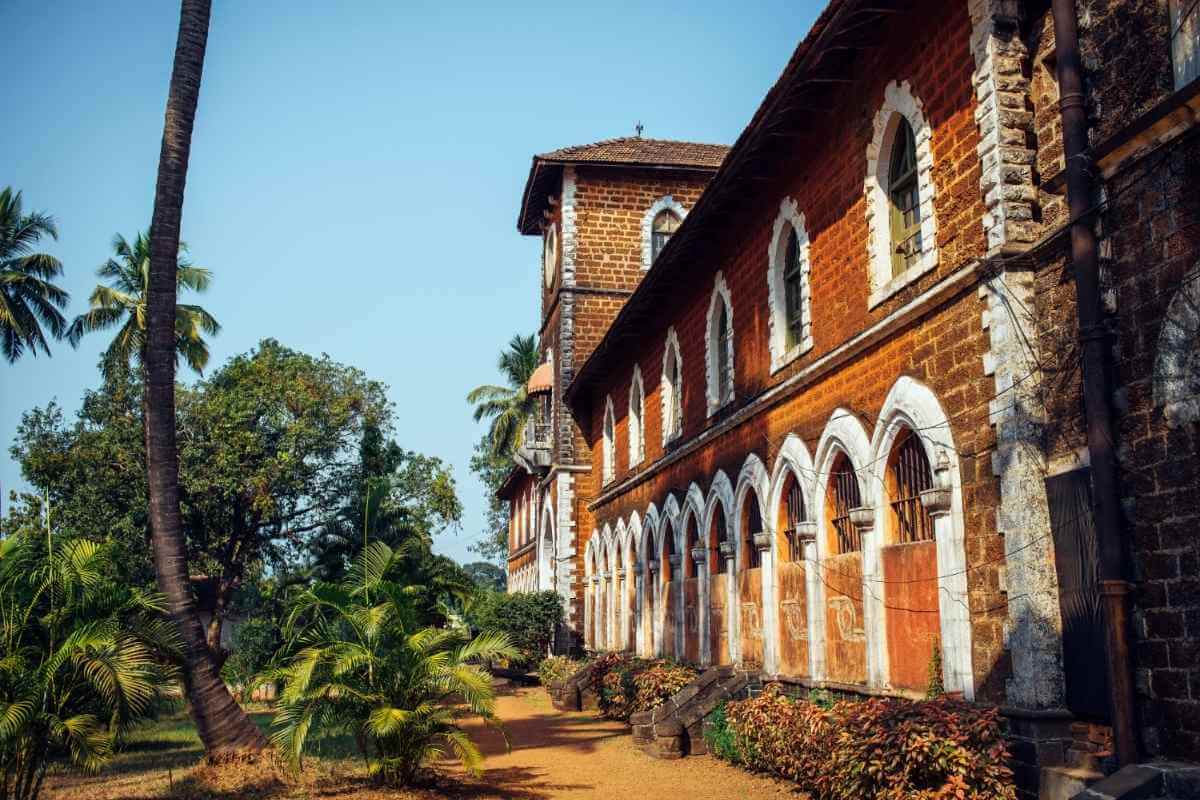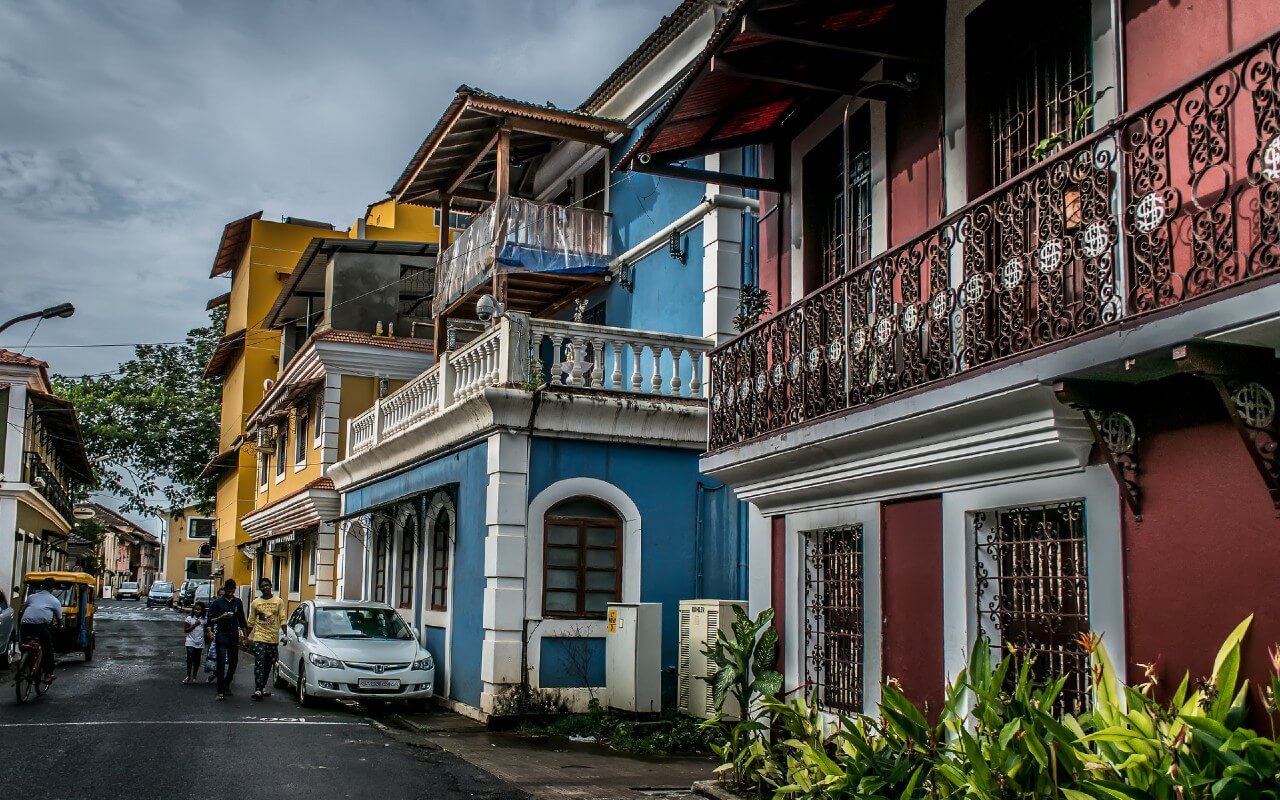In the Mangeshi hamlet in the Ponda area of Goa lies the Lord Shiva temple known as Mangeshi Temple or Shri Mangueshi Temple. It was constructed in honor of Bhagwan Manguesh, the Kuldevata of Gaud Saraswat Brahmins, and is the biggest and busiest temple in Goa. The god is thought to be Lord Shiva, and his name was taken from the words “Mam Girisha,” which Goddess Parvati used when Lord Shiva tried to terrify her by assuming the shape of a tiger.
Along with other gods, the Mangeshi Temple complex also has temples dedicated to Goddess Parvati and Lord Ganesha. Here, a Shiva Linga is used to worship Lord Shiva. On Mongir Mountain, near the banks of the Bhagirathi River, Lord Brahma is said to have dedicated this Mangesh Linga. The 450-year-old temple is renowned for its spectacular design, which includes imposing domes and an impressive water tank.
Numerous worshippers go to the temple, especially during important Hindu holidays like Maha Shivaratri and Navaratri. During these festive times, the temple grounds are filled with unique ceremonies, prayers, and cultural events, creating a colorful atmosphere. In addition to being a revered religious institution, the Shri Mangeshi Temple serves as a representation of Goa’s rich cultural history. It is a well-liked site for travelers looking to discover the religious and cultural aspects of the area because of its magnificent architectural features and spiritual atmosphere.
History of The Mangeshi Temple
The original temple at the location is thought to have been constructed in the early 15th century, following historical reports. But to get to its current state, it has undergone several upgrades and additions throughout the years. The temple underwent a substantial modification in the 18th century by the Maratha king Shahu Raje of Satara. Shahu Raje, a follower of Lord Mangesh (Lord Shiva), generously contributed to the renovation and enlargement of the temple complex.
The temple was updated and rebuilt with a new architectural style under Shahu Raje’s sponsorship. The current building is a representation of the 18th-century architectural fad. The elaborately carved, ornamental, and distinctive shikharas (pyramidal towers) that are distinctive to Goan Hindu temple architecture were placed throughout the temple complex.
To preserve its cultural and religious relevance, the Shri Mangeshi Temple has undergone further repairs and restoration throughout its history. Over time, the temple has seen a steady growth in tourists and has remained a significant destination for pilgrims seeking Lord Mangesh’s blessings.
The Shri Mangeshi Temple is currently one of Goa’s biggest and most revered temples. It serves to draw both visitors and believers who come to feel its mystical ambiance, take in its stunning architecture, and pay respects to Lord Mangesh. The temple is an important symbol and a representation of Goa’s religious and architectural legacy due to its rich history and cultural heritage.
Architecture of Mangeshi Temple
The Shri Mangeshi Temple in Goa is a stunning fusion of traditional Goan Hindu design with elements from the Saraswati and Kavi architectural traditions. The temple complex has fine craftsmanship, elaborate sculptures, and a pleasing layout.
The deepstambha (lamp tower), a large structure with seven stories, is a prominent element of the temple’s main entrance. Intricate carvings of Hindu deities, mythical characters, and other decorative patterns cover the deepstambha.
The actual temple building is mostly white-washed and has sloping roofs as well as multi-tiered pyramidal towers, or shikharas. These shikharas, a distinguishing element of Goan Hindu temples, increase the grandeur of the temple. Kalashas (urns) and amalakas (circular stone discs), which represent plenty and divine energy, are placed atop the shikharas. A pillared hall leads to the principal deity, Lord Mangesh, who is housed in the sanctum sanctorum (garbhagriha). The garbhagriha’s interior is ornamented with fine woodwork and paintings that represent several Hindu deities and mythical themes.
Other significant buildings inside the complex, such as a sabhamandap (assembly hall) and a dhwajastambha (flagpole) at the entrance, are also a part of the temple’s construction.
The intricate sculptures found throughout the temple complex include representations of gods, celestial beings, and other mythical creatures in addition to scenes from Hindu epics including the Mahabharata and the Ramayana. These sculptures serve as a reminder of the high level of craftsmanship and artistic ability used in the temple’s construction. The Shri Mangeshi Temple’s distinctive architectural design honors Goa’s rich cultural history and distinctive culture. It is a beautiful example of traditional Goan Hindu temple construction and draws tourists with its meditative atmosphere.
Legend of Mangeshi Temple
Lord Shiva and the goddess Parvati play a prominent role in the tale surrounding the Shri Mangeshi Temple in Goa. As stated in the legend: The current location of the temple was formerly a deep forest home to the formidable monster Mang. The monster had become haughty, wrecked devastated the country, and tormented the populace. The goddess Parvati was troubled by this and pleaded to Lord Shiva for assistance.
Lord Shiva consented to battle the demon Mang after being pleased with her dedication and prayers. The monster was defeated after a bloody struggle between Lord Shiva and him. Lord Shiva, in his guise as Lord Mangesh, triumphed and took over as the area’s ruling god.
Following the fight, Lord Shiva decided to live there as Lord Mangesh. The temple, which is today referred to as the Shri Mangeshi Temple, was built on the property where Lord Mangesh lived.
In another version of the story, Lord Shiva arrived in Mangeshi in the shape of a linga, which is a depiction of him. The linga was then surrounded by a temple, which was later converted into a holy site of devotion. The victory of good over evil and Lord Shiva’s divine intervention to shield the populace from danger are both highlighted in the tale of Shri Mangeshi Temple. This myth is attested to by the temple, which draws worshippers looking for Lord Mangesh’s blessings and protection.
People who follow this religion think that worshiping at a temple may provide them spiritual comfort, blessings, and fulfillment of their aspirations. The narrative enhances the temple’s spiritual and cultural value, elevating it to a respected site of devotion in Goa.
How to reach Mangeshi Temple
- By Air: Goa International Airport, sometimes referred to as Dabolim Airport, is the closest airport, and it is situated in Dabolim, Goa. One can take a pre-arranged taxi or hire an automobile to go to the temple via the airport. The trip takes about an hour, and it is a distance of about 34 kilometers from the terminal to the temple.
- By Train: Karmali train Station, which has good connections to important Indian cities, is the closest train station to the Shri Mangeshi Temple. You may either rent a cab or take a city bus to go to the temple from Karmali Railway Station. The journey takes around 40 minutes and covers a distance of about 21 kilometers from the Karmali train station to the temple.
- By Road: Using a private vehicle, a cab, or a bus, you may travel to the temple by road in Goa thanks to the state’s well-maintained road system. Mangeshi hamlet, which is around 21 kilometers from Panaji, the capital of Goa, is where the temple is situated. To get to the temple, use either the Ponda-Belgaum Road or the NH748. Numerous local buses travel to Ponda from various locations across Goa, where you can then hire an auto-rickshaw or a cab to take you to the temple.

























